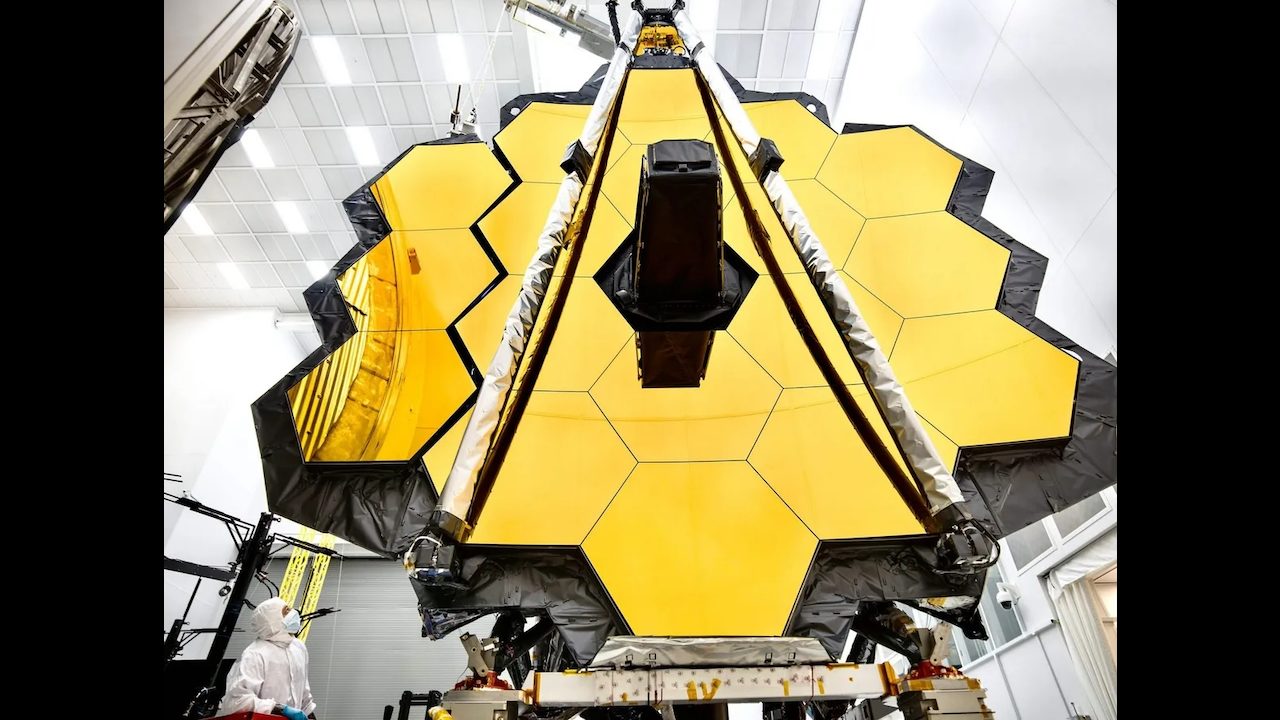(Mike Maharrey, Money Metals News Service) Gold is helping unlock mysteries of the universe.
In December 2021, the James Webb Space Telescope (JWST) was launched. Over the last several years, the telescope has produced stunning images that are helping scientists to better understand the universe.
Scientists began developing plans for the $10 billion replacement for the Hubble Telescope in 1996. When it was launched, researchers said they hoped the device would unlock many “mysteries of the universe,” and claimed the telescope would allow us to “look back in time to see the very first galaxies that formed in the early Universe.”
Over the last few years, the telescope has facilitated some steps in that direction.
For instance, JWST has observed galaxies that appear to have formed just 300–400 million years after the Big Bang, much earlier and more massive than expected. This suggests galaxy formation may have occurred faster and more efficiently than current models predict.
JWST has also identified water vapor, clouds, and haze in the atmospheres of several planets outside of our solar system, and CO2 in the atmosphere of exoplanet WASP-39b. This could pave the way for identifying potential biosignatures in the future.
The power of the James Webb Space Telescope dwarfs that of its predecessor and offers unprecedented resolution and sensitivity. The telescope’s ability to “see” deep into the infrared spectrum allows it to image the distant universe as far back as the first galaxies and even the first stars.
Gold helps make this amazing imaging possible.
Each of the telescope’s 18 gold-coated, hexagonal mirrors has a diameter of just over 4 feet. Stitched together in a honeycomb pattern, the mirrors have a total diameter of 6.5 meters (21.5 feet). The mirrors are made of beryllium and coated with a microscopic layer of pure gold.
Why gold?
Because the yellow metal is one of the very best materials at reflecting infrared light. Scientists used beryllium as the base for the mirrors because the metal exhibits almost no thermal expansion at extremely low temperatures. In other words, the extreme cold in space won’t cause the panels to warp. On the other hand, gold is comparatively temperature sensitive. That’s why a thin layer was put on top of the beryllium base.
Scientists say the JWST has seven times the light-gathering power of the Hubble Space Telescope.
From time to time, you will hear people inexplicably say, “Gold is just a useless metal.” They claim that gold’s value is simply “a matter of faith.”
This is sheer nonsense. In fact, gold is one of the most useful metals on the planet and would probably have even more practical applications if it weren’t so rare and expensive.
The truth is, gold did not become money because it wasn’t useful for anything else. Its role as money evolved because it is so valuable and has so many uses.
As World Gold Council consultant Trevor Keel wrote, “This is probably the most visible example of gold’s utility in space exploration, but there are many other critical applications.”
Gold isn’t just used in space exploration. About 80 tonnes of gold were used in industrial and tech applications in the first quarter of this year.
Photo credit: NASA/Chris Gunn
Mike Maharrey is a journalist and market analyst for Money Metals with over a decade of experience in precious metals. He holds a BS in accounting from the University of Kentucky and a BA in journalism from the University of South Florida.

